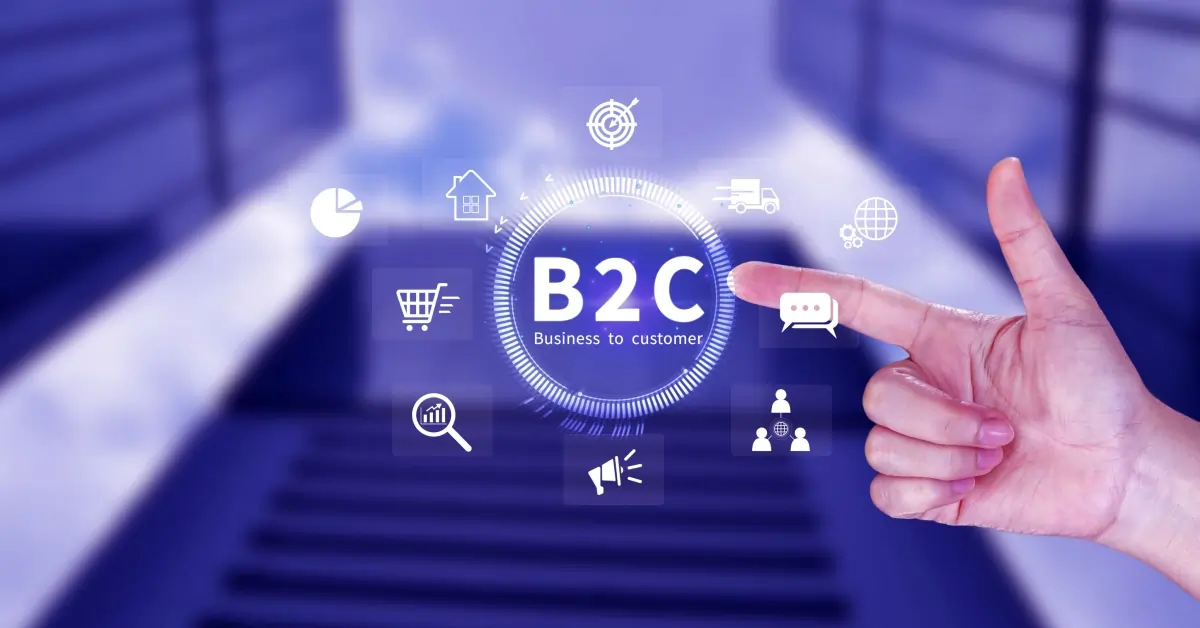B2B Customer Journey: Mapping, Strategies, and Benefits

Are you lost in the maze of your B2B customer journey? This guide will map it out for you.
The B2B customer journey highlights the touchpoints of one business (the vendor) with another (the customer). One of the key focuses of mapping this journey is to provide a better experience to customers from research to post-purchase.
Mapping the B2B journey helps your business better understand the customer’s path during their decision-making process.
This guide brings everything related to the B2B customer journey, its stages, and the need for customer journey mapping.
Table of Contents
- What is a B2B Customer Journey?
- B2B Customer Journey Stages
- Why Conduct Customer Journey Mapping?
- B2B vs B2C Customer Journey
- How to Create a B2B Customer Journey Map
What is a B2B Customer Journey?
The B2B customer journey refers to all the interactions a business goes through when considering and ultimately purchasing a product or service from another business.
It’s essentially the path a company takes from becoming aware of a need to becoming a customer.
B2B Customer Journey Stages
1. Awareness
The awareness stage marks the beginning of a B2B customer journey. Here, potential customers first recognize a problem or need within their business. This could be triggered by anything from operational inefficiencies to a lack of specific resources.
Providing valuable educational content is key to grabbing their attention at this stage. This content should address their specific problems and demonstrate your expertise in the area.
2. Consideration
At this stage, the potential customer is interested and actively researching solutions to their problem. They compare vendors and evaluate options based on features, benefits, and cost.
At this stage, you can nurture their growing interest by providing valuable resources to help them make better decisions. Offer product demos or trials to showcase your product’s capabilities in action.
3. Decision
This is the critical stage where the potential customer makes a final decision. They might request demos and proposals or negotiate pricing before committing.
You can address any remaining concerns and show the value you can deliver. Offer product demos or trials to showcase your product’s capabilities. Provide clear and transparent pricing information. Be responsive and address any questions or concerns promptly.
4. Implementation
Once the customer decides to move forward, this stage involves finalizing the purchase agreement and implementing the solution.
Ensure a smooth onboarding process and provide excellent customer service. Offer clear documentation and training materials. Be available to answer questions and address any initial challenges.
5. Retention and Advocacy
The journey doesn’t end with the purchase. Your goal is to retain the customers, build long-term loyalty, and turn them into advocates for your brand.
Provide ongoing support and ensure customer satisfaction. Offer additional resources and training opportunities. Gather feedback and continuously improve your product or service.
Why Conduct Customer Journey Mapping?
Customer journey mapping is a way to visualize customers’ experiences, processes, and needs while they are interacting with your business. This will allow you to overcome their obstacles and make the process efficient and seamless.
By mapping this journey, you gain valuable insights that can be used for:
Better Insight into Customers
Mapping the customer’s journey gives you insight into what they need, what motivates them, and their pain points. This helps your company realize its challenges as well as the decision-making process and prioritization, resulting in improved customer experience.
Personalized Approach
A customer journey map created with deliberation provides adequate personalized experiences to your customers, thereby developing stronger relationships and significantly increasing customer satisfaction.
Reference for Your Team
The essence of customer journey mapping is to serve as a point of reference for different teams in your organization. Marketing, sales, customer service, and product development departments become more closely aligned and collaborative to ensure a consistent and integrated customer experience across all touchpoints.
B2B vs B2C Customer Journey
Both B2B (business-to-business) and B2C (business-to-consumer) customer journeys include the entire customer interaction with a business, from discovering a product to making a purchase.
The main goal of both journeys is to provide an elevated customer experience. However, there are quite a few differences between the two.
| Factors | B2B Customer Journey | B2C Customer Journey |
| Target audience | Focuses on organizations with multiple decision-makers involved in the purchase process, such as CEOs, CFOs, department heads, and procurement specialists. | Targets individual consumers whose buying decisions are based on factors like age, gender, income, and location. |
| Products | Designed to solve business problems and improve operations, like CRM software, knowledge management systems, and payment processing tools. | Cater to individual needs and preferences, including entertainment options like streaming services, food from restaurants, and clothing. |
| Decision-making process | The decision-making process is complex and multi-layered. It involves research, evaluation by different departments, approvals, and potential negotiations. | Decision-making processes are usually more straightforward and are influenced by price. This includes looking at online reviews, social media recommendations, or a quick comparison before purchasing. |
| Needs and pain points | In B2B, the focus is on solving specific business problems, thereby impacting growth, efficiency, or profitability. | B2C focuses on meeting individual needs, desires, convenience, or entertainment. |
| Communication style | B2B employs formal, professional, data-driven communication styles that emphasize logic, facts, and benefits. | B2C employs a creative, emotional, persuasive communication style that aims to connect with the target audience personally. |
| Sales cycle | B2B sales cycles are lengthy, involving negotiations and onboarding processes. | B2C sales cycles are shorter, with faster decision-making and even impulse purchases. |
How to Create a B2B Customer Journey Map
Creating a B2B customer journey map helps your business understand the interactions with customers throughout their purchasing process and identify any problems they face.
Here are the steps involved in creating a B2B customer journey map:
1. Define Your Buyer Personas
Buyer personas are hypothetical representations of your customers.
You create different customer personas based on decision-making units and different buyer types within your target market segment (e.g., company size, industry).
This will help you know about the customers better and identify target customers.
2. Identify Key Touchpoints
The second step involves mapping out all customer interactions with your brand throughout their journey.
You can identify all possible points of contact, including online interactions (website visits, social media), offline interactions (industry events, sales calls), and customer support interactions.
3. Analyze Customer’s Current Experience
A Customer Relationship Management (CRM) system can become a valuable tool for understanding how customers experience your brand.
It allows you to gather customer feedback from various sources, including surveys, interviews, and even built-in analytics.
You can transform this information into a clear picture by employing data visualization tools. These tools help you uncover trends and patterns hidden within customer behavior.
4. Highlight Areas of Improvement
You can pinpoint areas where customers struggle by mapping the customer journey and gathering feedback. This allows you to identify and address their dissatisfaction, leading to targeted improvements.
Here, you focus on solutions: providing clear and concise product information through accessible channels like user guides and interactive tutorials. Additionally, ensuring readily available customer support empowers customers to get the help they need when they need it.
5. Implement Changes
The next step is to make strategic adjustments to optimize the customer journey. It is essential to develop an action plan to address the gaps and opportunities identified with the help of your customers’ feedback and implement the changes in a phased manner.
Train your team with each new upcoming process or tool to make the implementation successful. Consider tools like marketing automation platforms to streamline communication and personalize B2B interactions.
6. Monitor and Iterate
Continuous improvement depends on constantly assessing change’s effect while making necessary adjustments. Regular customer feedback and journey analysis identify new opportunities for improvement by creating metrics and KPIs to measure.
As your business and customers evolve, iterating on your customer journey map ensures that your strategies remain effective and relevant.
To Sum It Up
The B2B customer journey is a complex but vital component of any business strategy. By mapping and understanding the customer’s journey, your company provides superior customer experiences. This increases customer loyalty and growth.
The goal of B2B customer journeys is not just to make a sale but also to build a lasting relationship with customers.
Related Post
Copyright © gocustomerexperience.com. All Rights Reserved.




